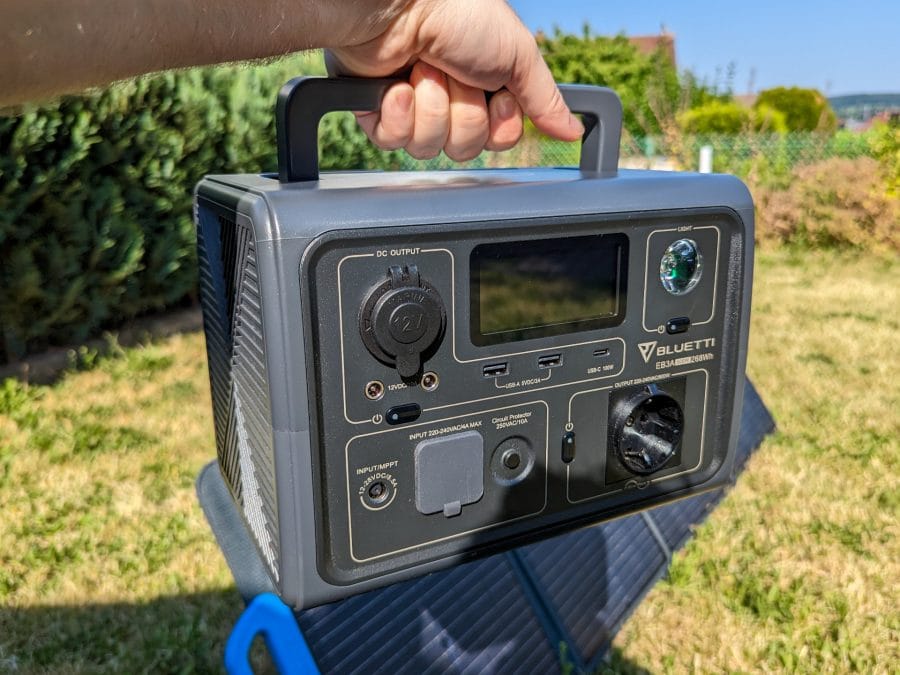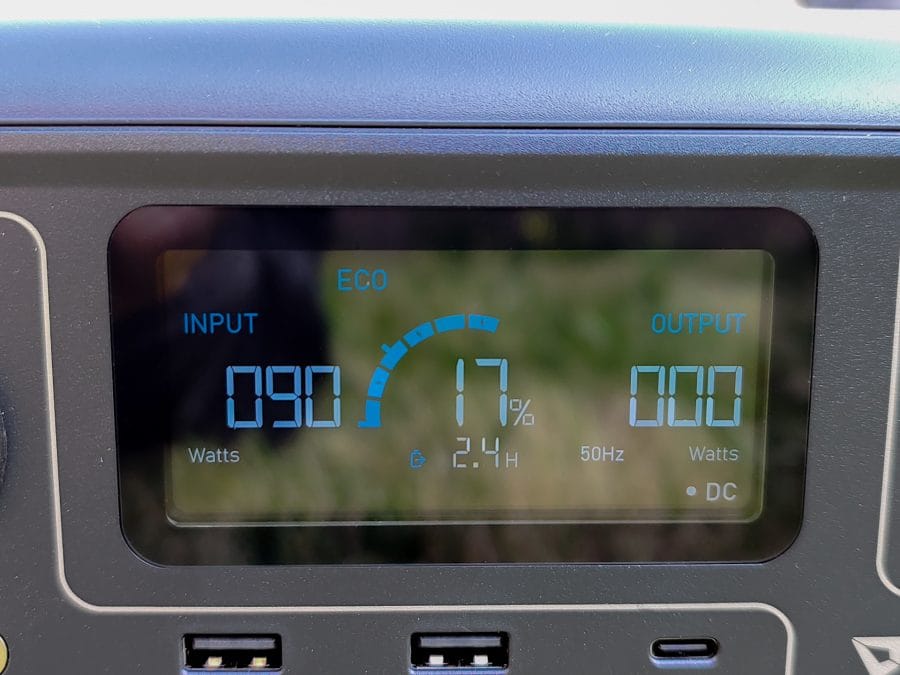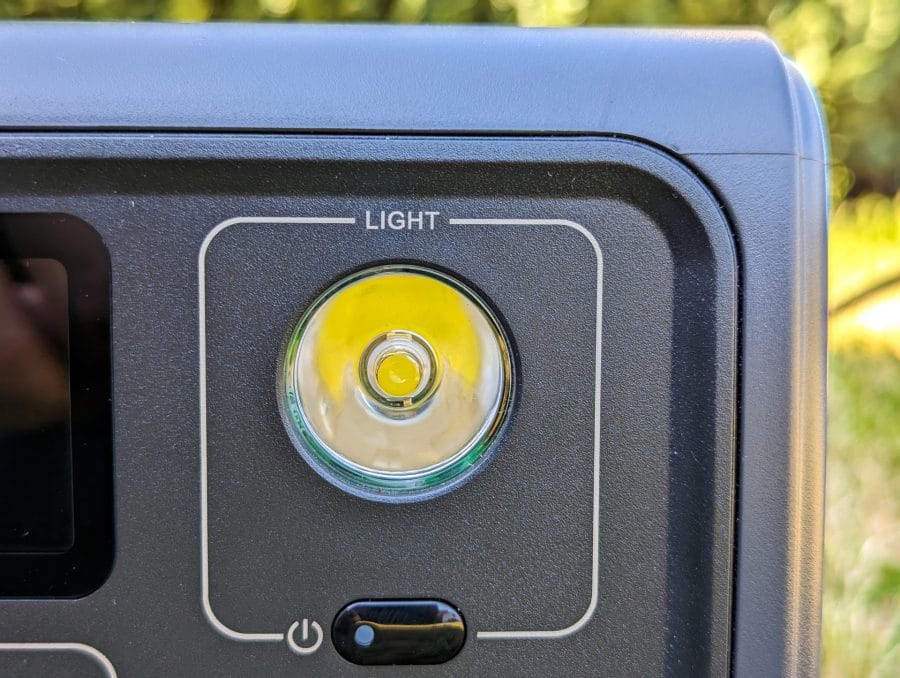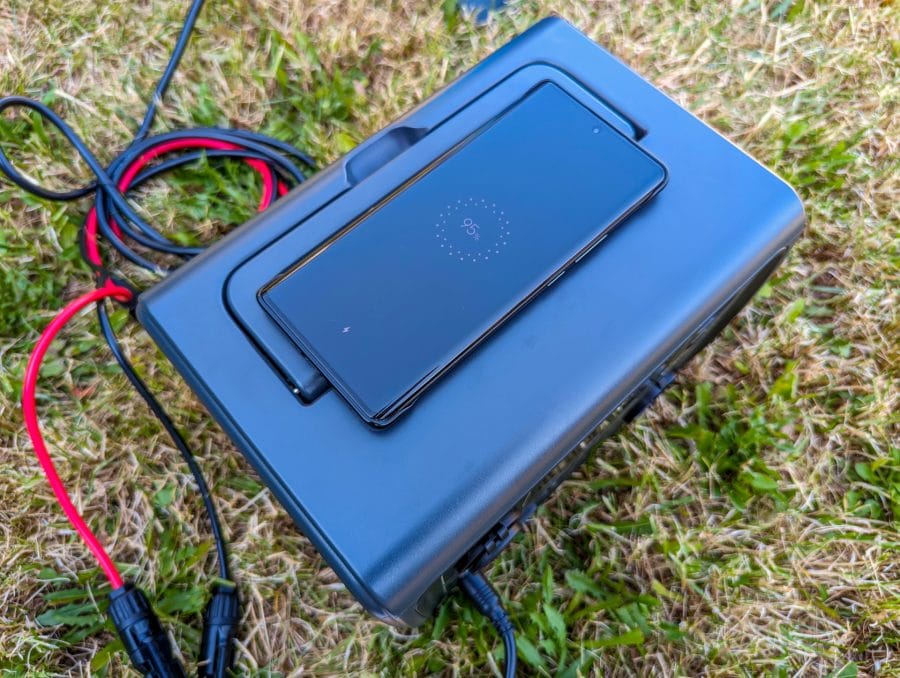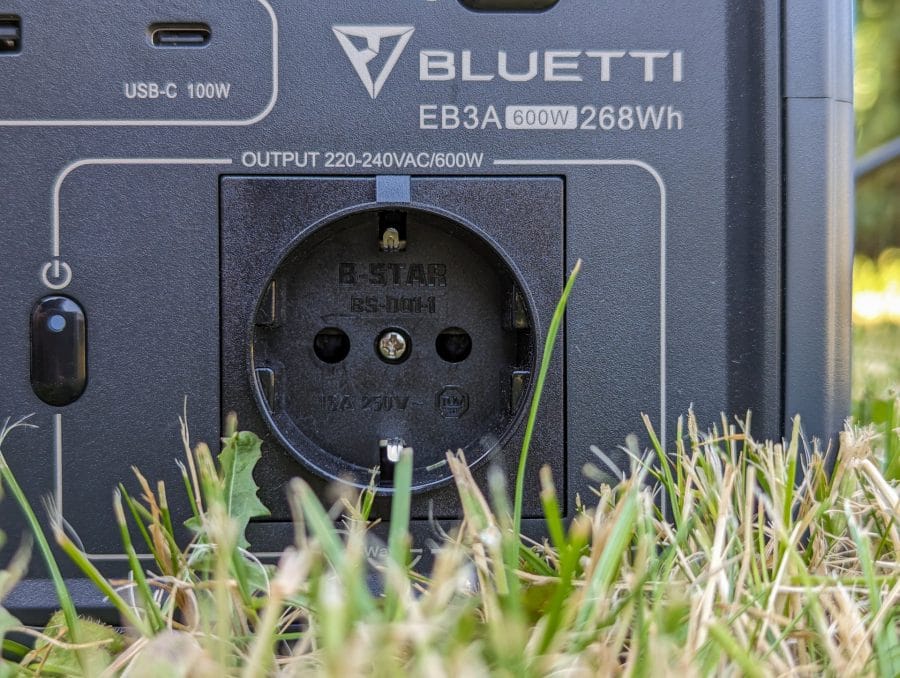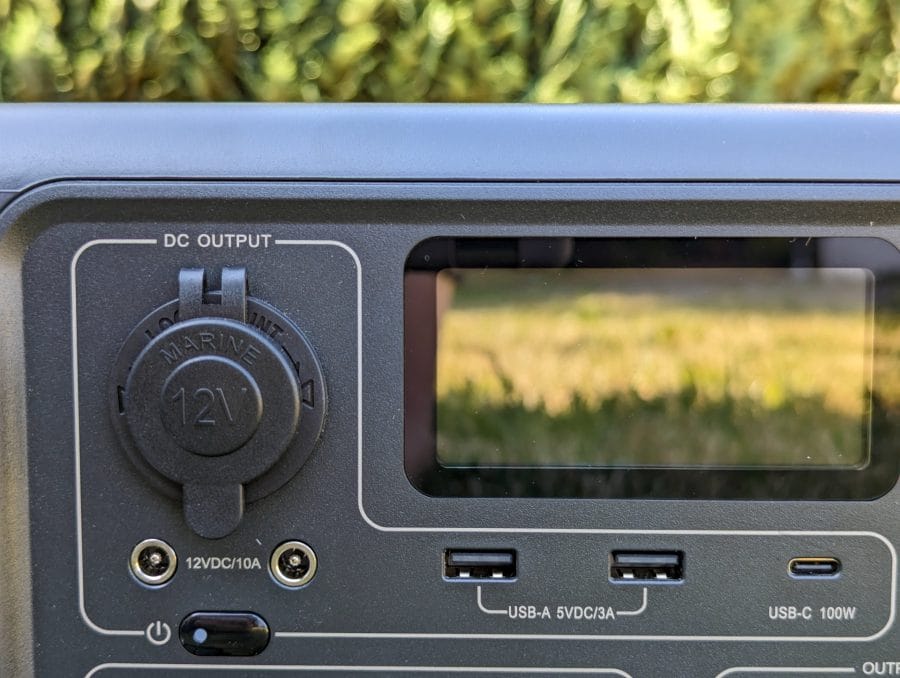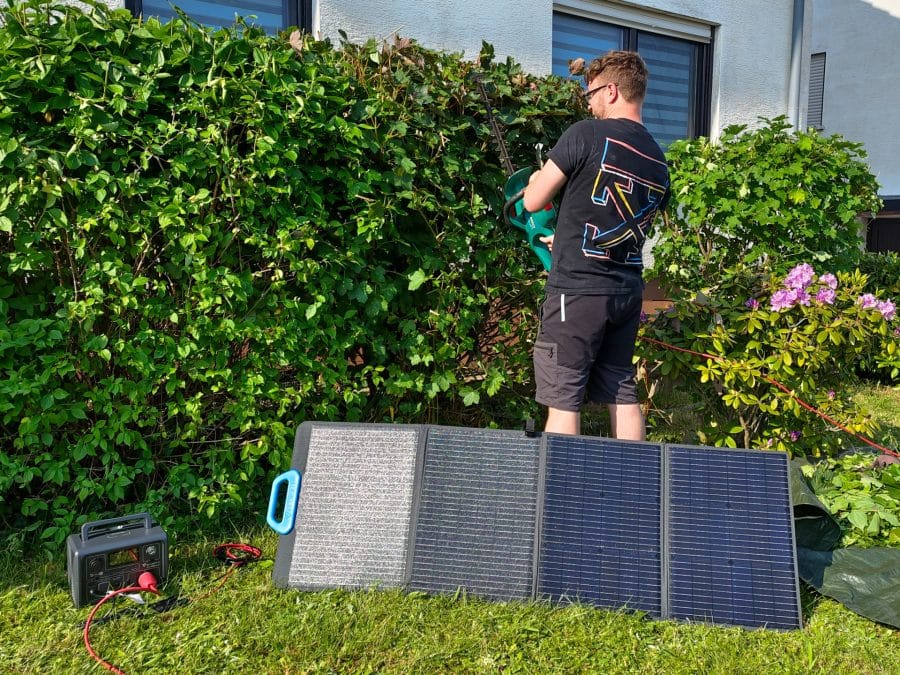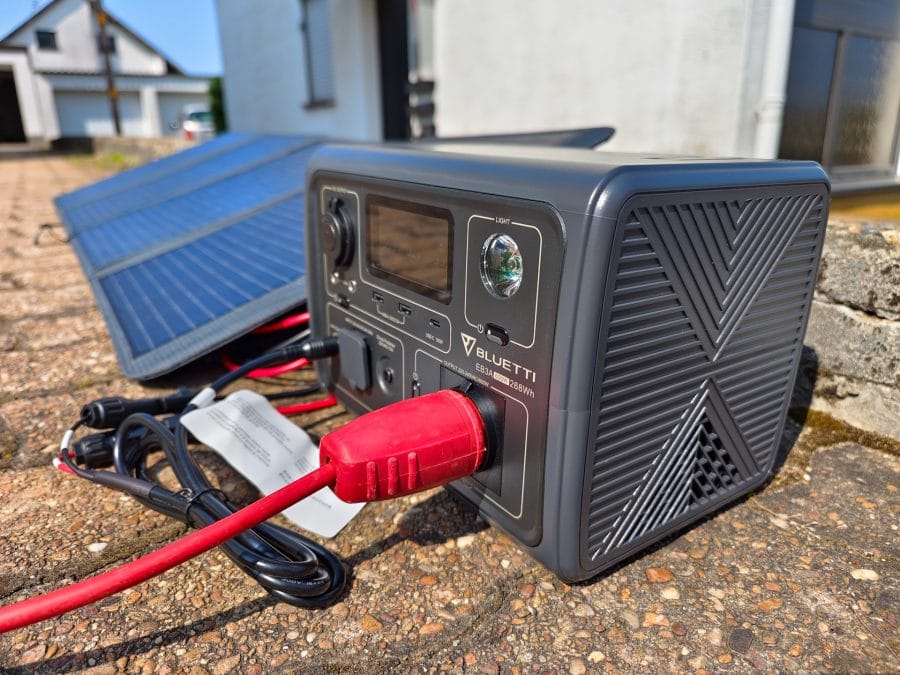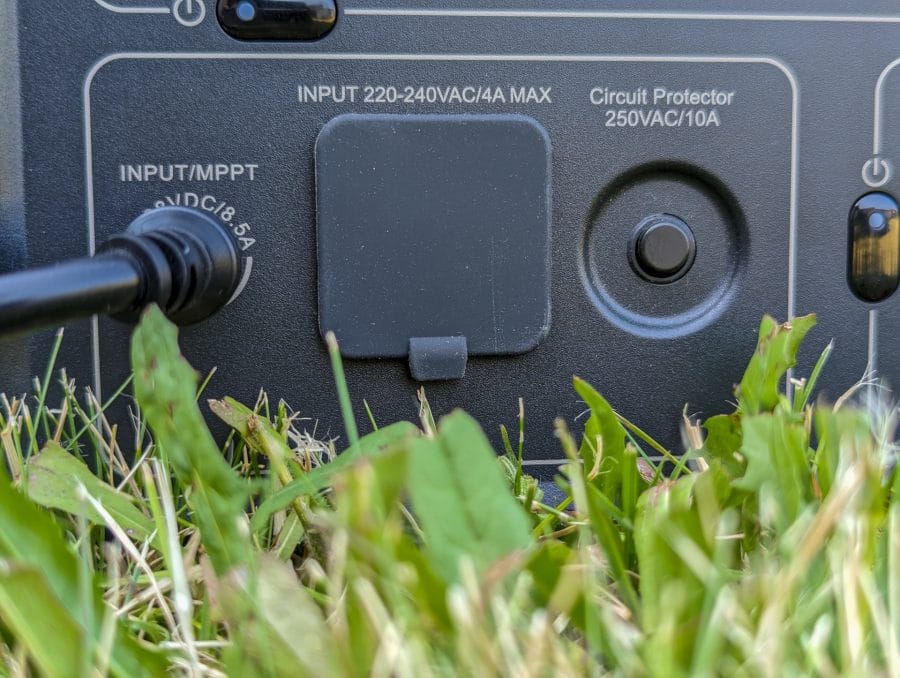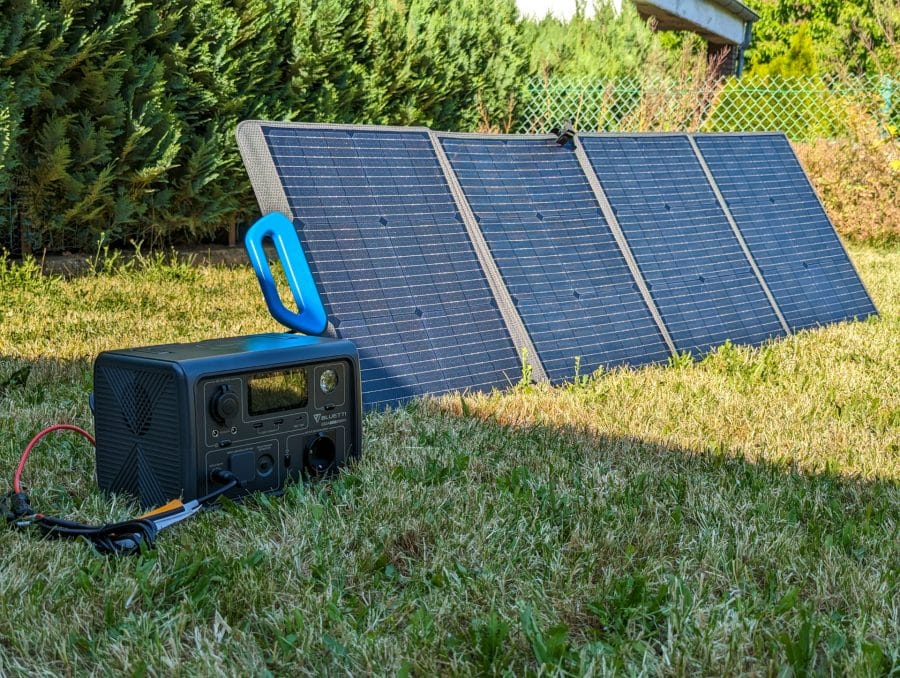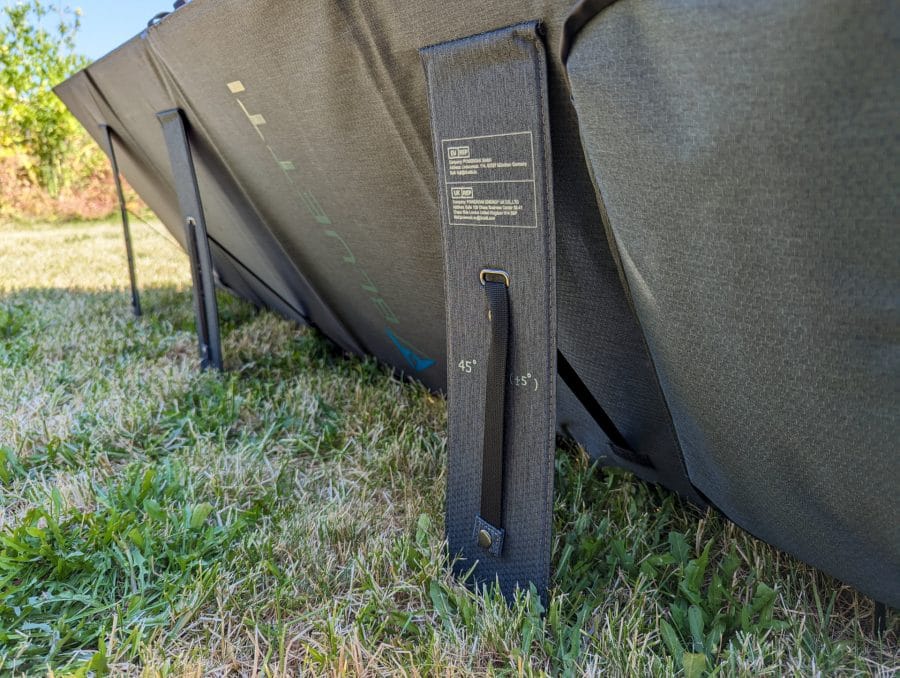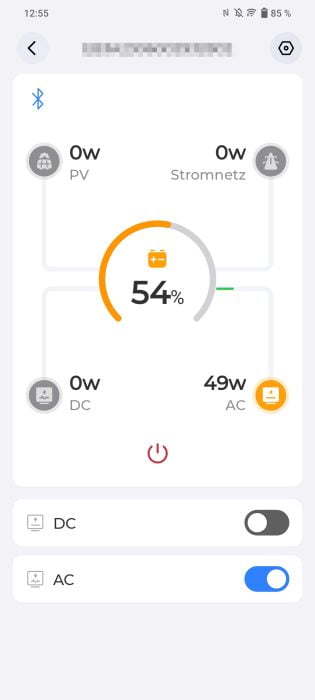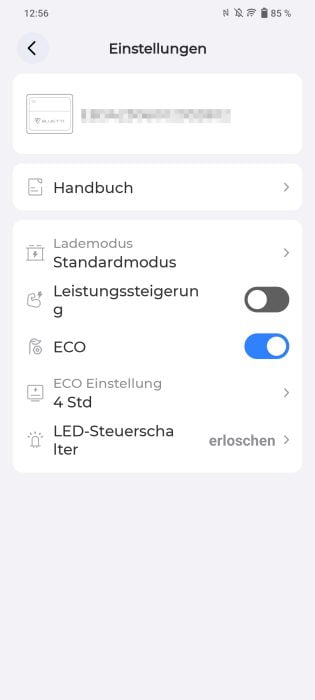Bluetti EB3A: unboxing, design and connections
What's in the box
The Bluetti EB3A comes in a well-organized package that includes:
- The EB3A power station
- A cold device cable
- A solar charging cable (DC7909 to MC4)
- An instruction manual
An important note: Certain special accessories, specifically the car charging cable (MC4 to 8 millimeters DC), are not included in the scope of delivery and must be purchased separately.
Design and build quality
With a weight of just 4,6 kilograms and dimensions of 255 x 180 x 183 millimeters, the EB3A is one of the most compact and lightest power stations on the market. Its case made of robust plastic is stable, but not quite as durable as some of the competitors.
Another important point: The case is not weatherproof, which should be taken into account for outdoor use.
connections and functions
The various connections of the Bluetti EB3A are located on the front:
- DC output
- 1x car socket (12V 10A)
- 2x DC5521 (12V 10A)
- 2x USB-A (5V 3A)
- 1x USB-C Power Delivery (100W)
- AC output
- 1x Schuko socket (600W)
- inputs
- 1x IEC built-in plug
- 1xDC7909
Each DC output and the Schuko socket have separate power buttons that light up green when activated. There is also a circuit breaker reset on the inputs.
For a better overview, the EB3A has a two-color display that can also be easily read outdoors. The remaining charging time when charging, the remaining operating time when consumers are connected and the battery capacity are displayed both graphically and as a percentage. This estimate is adjusted in real time depending on the input or output power.
To the right of the display is a 5-watt LED spotlight with three modes controlled by the power button: medium, high, and flashing. A high luminosity should not be expected here. It is just enough to use the power station as an emergency flashlight.
On the top, the foldable carrying handle, which ensures comfortable handling, stands out in particular. There is also a wireless 15-watt charging pad at the top, ideal for Qi-compatible devices and a clear plus in convenience.
Bluetti EB3A: technology and capacity
In terms of technology, the Bluetti EB3A has its finger on the pulse. Surprisingly, high-quality LiFePO4 (lithium iron phosphate) cells can be found inside, which are mainly found in larger power stations. With this, Bluetti underscores the innovative character of the compact EB3A.
Bluetti also predicts over 2500 charge/discharge cycles before the battery drops to 80% of its starting capacity. This represents up to five times the service life of conventional Li-ion batteries based on NMC (nickel manganese cobalt). With a two-year warranty, Bluetti is a bit more reserved than competitors such as Anker or EcoFlow.
Despite a capacity of 268,8 watt hours, the battery allows for multiple charging cycles of mobile phones (~25) or laptops (~3,5) and can also power devices such as camping fridges, televisions or less power-hungry power tools for a few hours.
I tested whether it had 268,8 watt hours by sucking the fully charged EB3A dry with a 300 watt light bulb. After about an hour, the lights went out and my energy meter showed consumption of 230 watt hours. An efficiency of 85 percent (230 watt hours / 268,8 watt hours) is impressive. The remaining 15 percent is lost in the conversion.
I measured a very similar result via the DC output. With an 8 ampere load, the consumption was 224 watt hours, which corresponds to an efficiency of 84 percent.
Bluetti EB3A: performance
While the US model has two AC connections, the European version of the EB3A is limited to a single AC output with 600 watts. According to Bluetti, however, this is able to handle short-term peak loads of up to 1200 watts and thus serve even the most power-hungry devices.
One catch here: the output voltage is reduced, which means that this power mode is not optimal for all device classes. Power mode is deactivated by default, but can be activated at the touch of a button via the Bluetti app. Whether this mode makes sense or is superfluous certainly depends on the respective application scenario and the connected devices.
In practice, the EB3A impressed me with its ability to easily power even demanding consumers. Tools like my 650-watt electric hedge trimmer or my 700-watt Bosch impact drill worked without any problems. Only with my 750-watt flex did the power station reach its limits and switch off with an error message.
I checked the initial values given by Bluetti with a load tester. The two DC outputs reliably triggered the overvoltage protection and switched off the power station from a load of 10,1 amps. The USB-A ports reliably adhered to the 5-volt, 3-amp promise and the USB-C port also consistently delivered 100 watts - enough to easily power a laptop.
Pass-through charging
A useful feature of the Bluetti EB3A is definitely the pass-through charging. This feature allows the power station to charge devices while charging itself.
A practical example from my test: While I was supplying my hedge trimmer with the EB3A, the power station was being charged at the same time via a solar module. The result? After an hour of hedge work, the battery level shrank by a modest 15 percentage points.
Uninterruptible power supply
Another bonus is the UPS (uninterruptible power supply) function. If the power station is charged via the mains and devices are connected, it automatically switches to its own power supply in the event of a power failure. Unfortunately, Bluetti does not specify an exact switching time.
I tested the UPS with a small home server, which continued to run reliably when the mains supply was interrupted. However, if you want to protect a gaming PC with it, you should use a more powerful UPS.
Eco mode
The EB3A's ECO mode is programmed to automatically turn off the unit after four hours if AC power falls below 10 watts and DC power falls below 1 watt. This function is particularly relevant for the EB3A.
In my tests, I found that the standby consumption is significant. For example, with no load connected, the active inverter draws an impressive five percentage points of capacity per hour. The DC outputs behave similarly, consuming over a percentage point of energy every hour.
Bluetti EB3A: charging
Steckdose
The EB3A offers various charging options. For conventional charging via the socket, only a cold device cable is required, as the power station is already equipped with an integrated power supply. With a charging power of up to 268 watts, the EB3A is fully charged in around 90 minutes.
For the impatient among us, there is the option of activating the turbo mode in the Bluetti app. This increases the charging power to up to 350 watts, but caution is advised here: Turbo mode can lead to faster cell wear.
In my test phase, I didn't reach the maximum 350 watts, but only 310 watts. This resulted in a full charge in about 80 minutes. The time difference to the normal charging mode is minimal, so that the turbo mode only seems advisable in real time constraints.
While charging, an active fan keeps the EB3A cool while generating a noise level of around 45 decibels. As a counterpart to the turbo mode, there is a silent mode in the app. You benefit from a reduced volume, but you have to accept a slower loading speed.
cigarette lighter
An additional option for charging the EB3A is the cigarette lighter in the car. However, the test was not without obstacles. First of all, as mentioned before, the car charger is not included in the scope of delivery.
Not a big problem as I had a car charger with an XT-60 connector on hand, but unlike most other brands, Bluetti uses an 8mm DC connector, which is why I used it matching cables had to reorder.
In practice, I couldn't get the 8,5 amps at 12 volts promised by Bluetti. With a maximum of about 80 watts, the upper limit was quickly reached. At this rate, a full charge of the EB3A would take approximately four hours.
solar module
The most environmentally friendly charging method is to use a solar panel. For my test I used the Bluetti PV120 solar module, which offers an output of up to 120 watts. Fortunately, both the cable and the connector between the solar panel and the power station are included in the package.
The solar module impresses with its mobility: When folded, it measures a compact 53,3 x 47 centimeters and can be easily transported thanks to the carrying handle. When unfolded, it measures an impressive 53,3 x 165,2 centimeters. However, the rather filigree stands can pose a challenge and the module actually fell over a few times during my tests.
With an optimal orientation on a sunny summer day, I could observe that up to 110 watts were transferred from the PV120 to the EB3A. This results in a charging time of less than three hours. If you want to maximize the sunny advantage, you can use the larger PV200 model or connect several modules in series. However, it should be noted that additional adapters may be necessary.
Simultaneous charging via AC and DC
Another feature of the Bluetti EB3A is the ability to be charged simultaneously via its AC and DC charging inputs. For example, if you combine the charging process via the cold device connection (AC) with the connection of a solar module, the power station theoretically achieves a charging rate of up to 430 watts.
However, that requires Turbo mode to be enabled in the app - a setting that Bluetti himself views with caution.
Bluetti EB3A: Bluetti app
Finally, a look at the Bluetti App (Android & iOS), a useful tool for monitoring and controlling the EB3A. The connection is via Bluetooth, although WiFi is unfortunately not an option. This means that communication with the EB3A is limited to close proximity.
- Clear information graphics
- Be careful when using Turbo mode
- There is still room for improvement
The information that can also be seen on the display of the power station is reflected within the app. Functionally, it allows turning on and off the AC and DC connections, switching between the operating modes - standard, turbo and sleep - and adjusting the ECO mode. There are also features such as controlling the LED lamp, activating power lifting and the option to update the firmware.
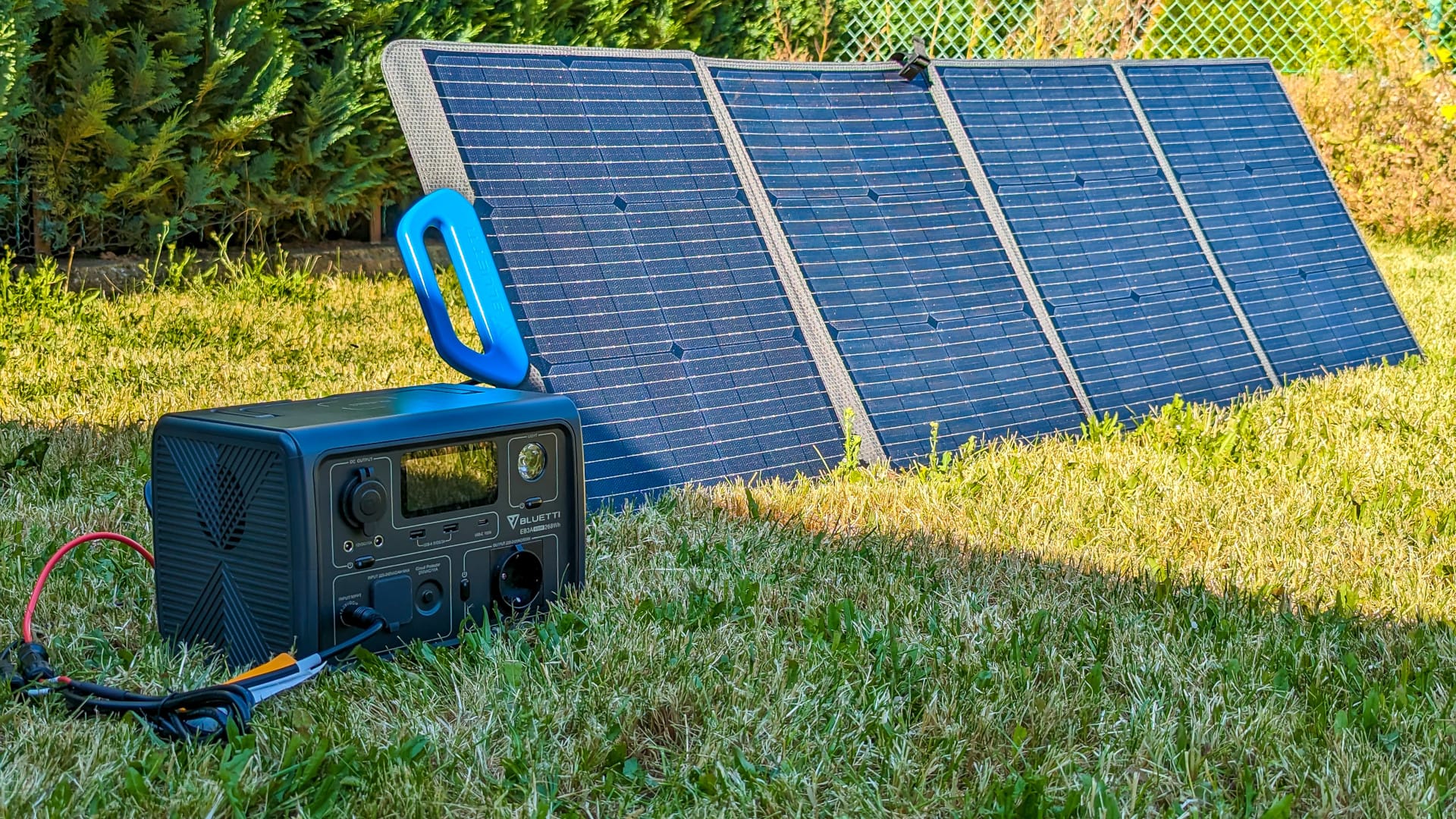
EB3A
Handy design
Integrated power supply
LiFePO4 technology
Quickly charged
High efficiency
App support
Uninterruptible power supply
Pass-through charging
No car charging cable
No XT60 output
Housing not weatherproof
High standby consumption
No wifi
In the test, the Bluetti EB3A presented itself as an impressive energy station with an excellent price-performance ratio. The compact design and the resulting good mobility make the power station the perfect companion for camping and festivals. Unfortunately, Bluetti has somewhat neglected weather protection, so caution is called for depending on the area of application.
Thanks to the latest LiFePO4 cells and a powerful 600 watt inverter, it is a reliable power source even for demanding devices such as hedge trimmers or impact drills.
The Bluetti PV100 solar module is the icing on the cake, supplying the station with sustainable energy. For anyone looking for a reliable power station, the Bluetti EB3A is undoubtedly a recommended option.

